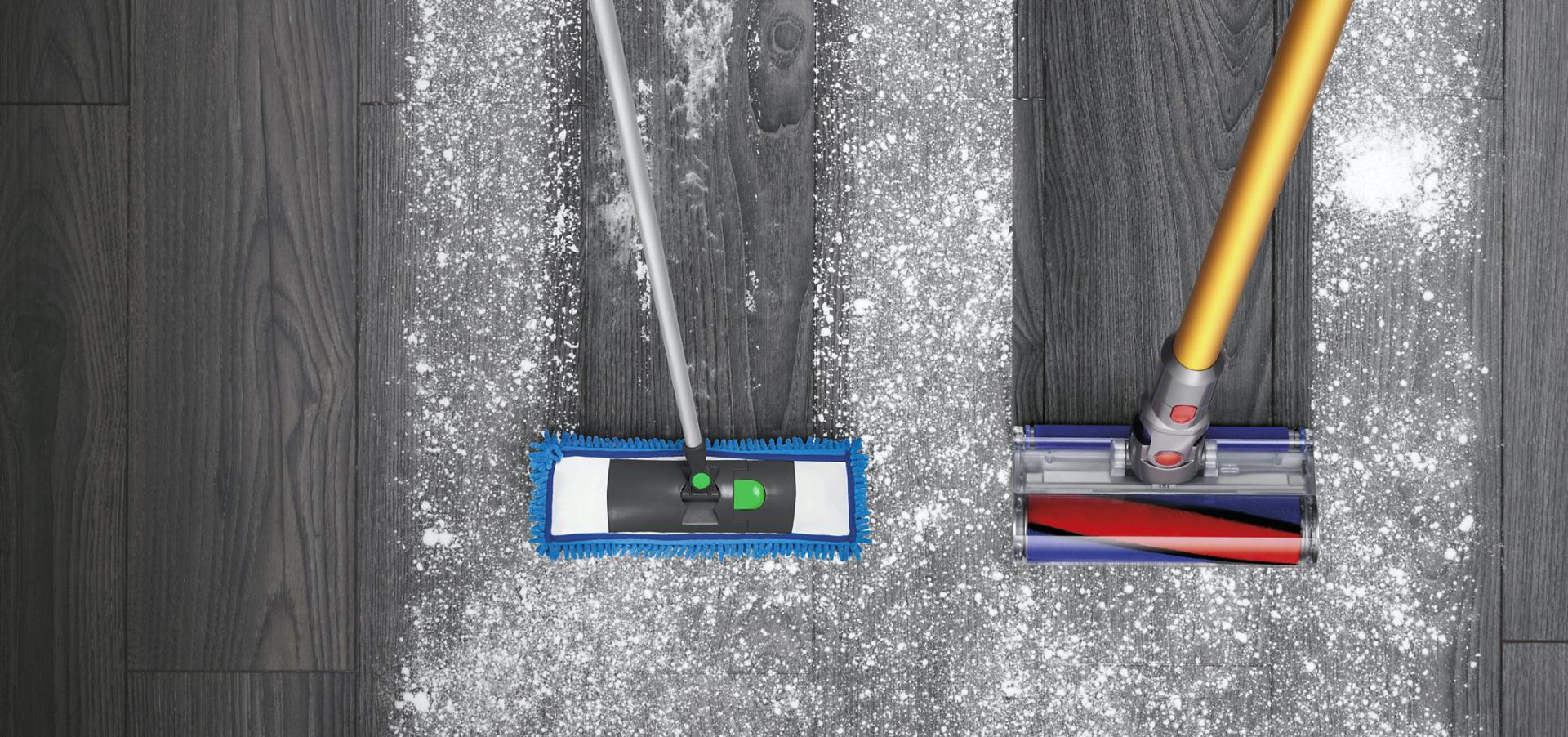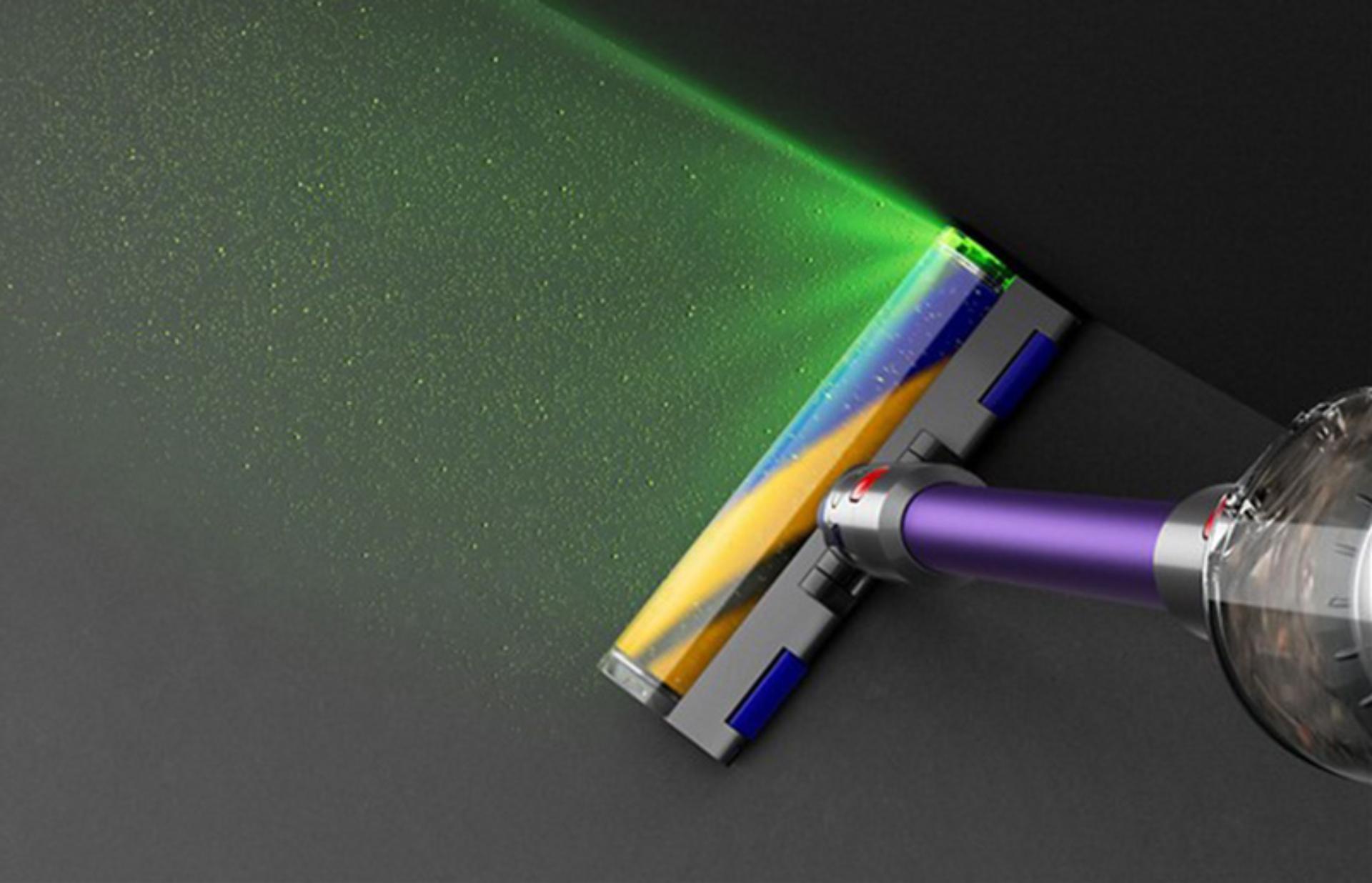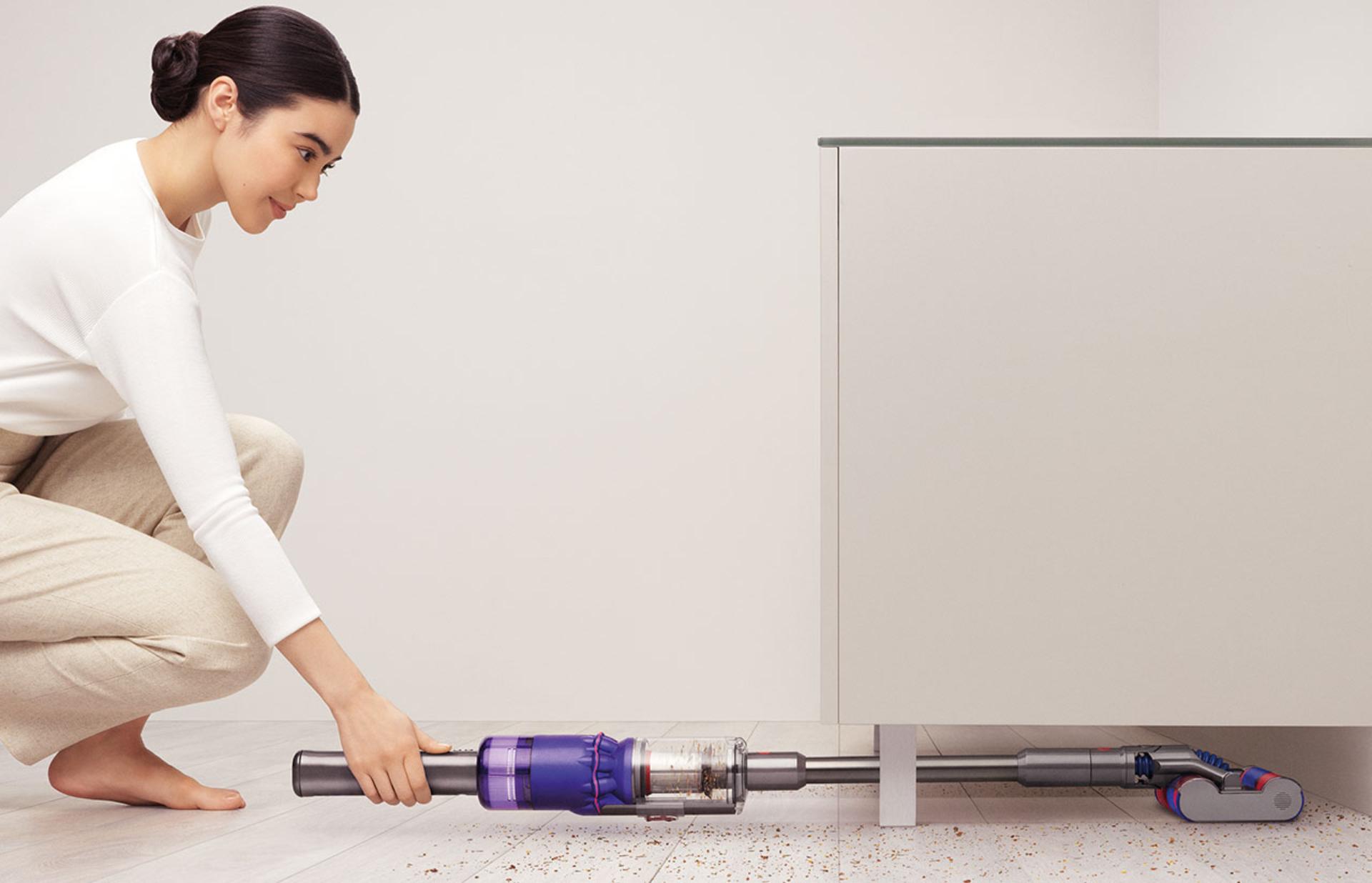
How to clean hard floors inside the home
For cleans to be effective, they need to be complete. As Sharon Yap – Head of Technology Development at Dyson explains, "Our 30 years of research in microbiology shows that the best way to get rid of dust allergen is to remove it completely from your home – which is why we invest so heavily in vacuum cleaner technology.”

When it comes to clean floorboards and hard floors, much of the dust won’t be visible to the naked eye. To fully remove impurities and particulate matter from hard floors, the right tools and approach need to be used. Sharon says, "In order to capture the fine dust and dirt that may not be seen to the human eye, you need an effective vacuum that picks the dust up, has efficient cyclones to keep it in the machine, as well as filters and seals to make sure it's not emitted back into your home. By doing this, you can then move on to the next step of cleaning your floors to achieve that true barefoot clean."
In this guide, Dyson’s experts explain how to clean timber floors, tiles and laminate properly. The best vacuum technology and tips including how to remove stains from tiles and mop hardwood floors is ahead.
Dyson tips for hard floor cleaning
The right way to clean wood floors and other materials includes a few parts. A hard floor vacuum is vital to an effective clean, as well as other considerations. The order in which you vacuum and mop hardwood floors matters to the end result.
"There is a common misconception that it’s ok to go straight into mopping floors as that cleans up all the dirt in your home." explains Sharon. "If dust isn’t removed fully prior to wet cleaning, then it can be smeared across hard floors when mopping your floors, potentially leaving a dirtier rather than a cleaner floor."
The amount of hard-to-reach and narrow spaces should also be considered in each clean. Manoeuvrability in your stick vacuums and accessories will ensure that no dust is left to build up.
How to clean different types of hard floors
To keep floors intact, use cleaning tools designed to support the materials. "Many people believe that hard floors are more resistant to wear and tear – for example, marble flooring is a common type of flooring in many households, and some might use cleaning products that contain ammonia or acids, which will cause the flooring to erode and be uneven! Even while scrubbing the floor, be sure not to use anything with sharp bristles like metal scrubbers".
How to clean hard wood floors
To maintain clean wood floors, use your hard floor vacuum at least once a week. This helps to prevent dirt from becoming ground in and removes invisible particles that can trigger allergies. Illuminated cleaning in the Dyson Gen5detect™, Dyson V15 Detect™, Dyson Outsize™ and Dyson V12 Detect Slim™ make invisible dust visible on hard floors – so you don’t miss a thing.2 "I try to give the high traffic areas of my home a little extra attention, such as kitchens and bedrooms, as the floor can quickly collect a lot of dirt, debris and stray hairs." Once you’ve used the vacuum to clean floorboards, mop once completely dry. This will avoid damaging the machinery.
How to clean tile floors
Your bathroom and kitchen likely feature tiles, thanks to their waterproof status. Tiles contain grooves, which dirt and grime can become embedded into. Because of this, upkeep is key. When vacuuming tiles, begin with the borders and move in long strokes, repeating each stroke up to three times to ensure any embedded dirt is lifted up. Our most manoeuvrable vacuum designed specifically for hard floors2, the Dyson Omni-glide™ moves quickly and in any direction. The articulating neck on the fluffy brush bar allows you to clean seamlessly around obstacles and into tight spaces.3 For how to remove stains from tiles, test your chosen cleaning agent on a small space and rub in circular motions, before applying across the whole area.
How to clean laminate floors
Because of their relatively thin form, laminated floors can be prone to scratches without the right tools. The omnidirectional cleaner head on the Dyson Omni-glide™ vacuum features ‘fluffy’, anti-static carbon filaments that won’t cause damage to laminated floors. Frequent cleans are also key to this material. A weekly clean should be sufficient – and make sure not to over-mop as liquid can seep into this floor type over time.
Other tips for the perfect clean
Part of how to clean wood floors and other types is proper preparation. Make sure the floor is free of clutter and gather the vacuum tools you’ll need. For example, in places like the bathroom where low furniture is common, the Low-reach adaptor adjusts to 90° so that you can reach all floor space easily. Read Dyson’s cleaning checklist for more tips.
When it comes to stains on different hard floor materials, don’t immediately reach for strong chemical agents. Dr Calum Robertson, Chemical Research Scientist at Dyson says, “Wooden floors have grooves and even tiles can be porous and absorb stains… the strong chemicals aren’t always the best solution – bleach can remove the varnish on wooden floors, so it’s always safer to start with a lighter solution like soap and water to avoid damaging your floors.”
-

Precisely-angled LED illumination with the Dyson Gen5detect™ vacuum cleaner. New Fluffy Optic™ cleaner head illuminates the microscopic dust and dirt you can't normally see on hard floors.
-

The slim and versatile Dyson Omniglide vacuums is perfect to effortlessly manoeuvre around obstacles on hard floors and into tight spaces.
Like this guide? Keep reading to discover how to remove pet hair in the home next.
1Illumination engineered for hard floors. Effectiveness of illumination influenced by ambient light conditions, debris type and surface.
2Compared to Dyson V8™ vacuums, tested by independent third-party laboratories.
3Tight spaces refer to gaps that are wider than 20.7cm.
Press Contact
ANZ Press Office
Email: aupressoffice@dyson.com
Dyson Newsroom
 Call us
Call us Email us
Email us Request a meeting
Request a meeting Live chat
Live chat